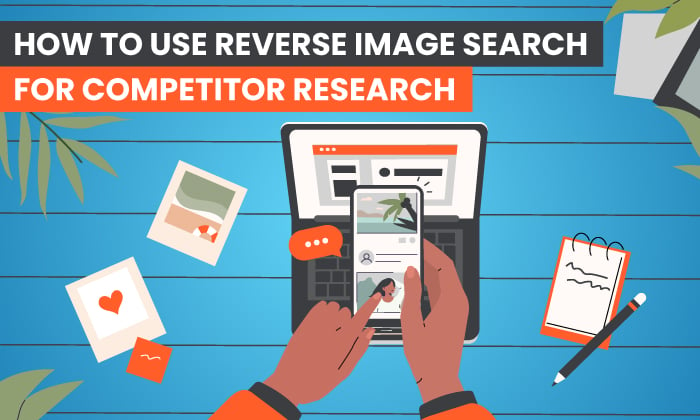
What do backlinks, reverse image search, and your business have in common?
Your bottom line.
Sure, you can blog until you have hundreds of posts on your site, but it takes time.
Can your business afford to wait? Probably not.
This is where a backlinks strategy comes in. Not only can it help with boosting your domain authority (DA), but it could expose your business to a new audience who may want to buy from you if you target the right sites.
How do you find these sites? Reverse image search. When done correctly, you can use it to snoop on your competitors and find the backlinks boosting their DA and profits.
Here’s how to turn their backlink success into yours.
What Is Reverse Image Search?
A reverse image search uses an image in place of a text-based query.
All you need to do is upload an image onto a search engine, and you’ll get a list of information. These details usually include:
- file type
- source of the original image
- image size
- other sizes of the same image
- websites using the image
- related images
While many people use reverse image search to check if someone is stealing their content, it’s a powerful tool in the hands of a savvy digital marketer.
I’ve used reverse image search to grow my backlinks by 26 percent, but it can do so much more than find unclaimed backlinks. When done right, it can give you the upper hand over your competitors while growing your authority.
Why Would You Use a Reverse Image Search for Competitor Research?
Backlinks.
Using reverse image search on your competitors is one of the best link-building strategies most people skip.
Not having any backlinks is a reason more than 90 percent of websites don’t get traffic from Google.
By uploading a photo of a competitor’s headshot or company logo, you can see at a glance where their inbound links are coming from and start building a list of backlink opportunities.
Why is this important?
Backlinks are a valuable Google ranking factor. The search engine uses links from other sites as a vote of confidence.
According to a study by Backlinko, the site holding the #1 spot on Google has, on average, 3.8x more backlinks than those in positions two through 10.
By analyzing where your competitors are getting links, you can determine what sites are helping grow their authority and get a slice of the pie for yourself. Getting those backlinks could help grow your traffic, build your authority, and potentially one-up your competitor.
For example, let’s say you’re competing with me. If you reverse image search my headshot, you’ll see results like these before the fold:
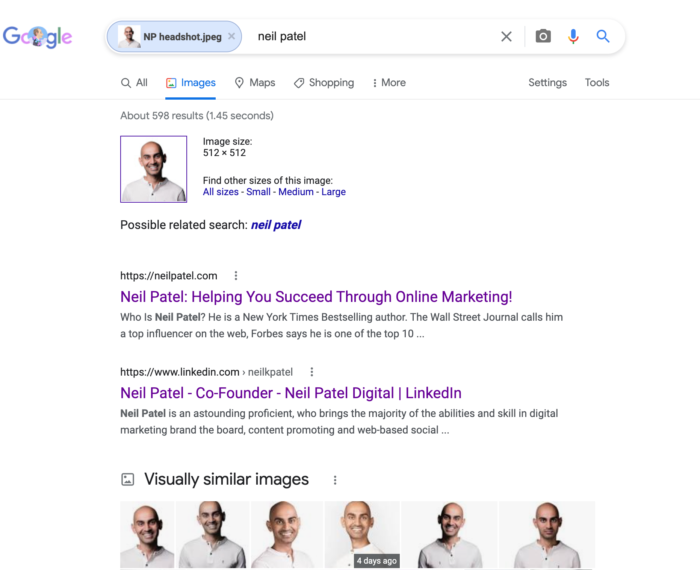
When you scroll down past this, you’ll see a few more pages:
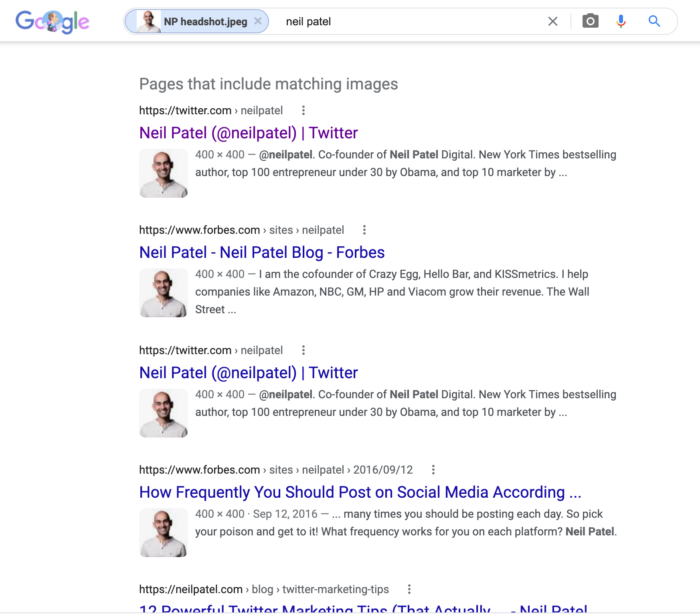
If you continue to scroll through the results, you’ll see I’ve been featured on sites like:
- Searchengineland.com (DA 91)
- Meltwater (DA 77)
- Forbes (DA 95)
- Getresponse.com (DA 81)
These are all powerful backlinks helping me grow my domain authority, website traffic, and sales.
How to Do a Reverse Image Search to Track Your Competitors
Ready to uncover those hidden link-building opportunities that lurk behind your competitor’s images? Here’s a step-by-step guide on how to do it.
Step 1: Find a Photo
What photo should you use for your reverse image search to track your competitors? I’d recommend using a headshot of the person who would be credited as the author.
Use their LinkedIn profile picture. They’ll likely use the same headshot for their guest blogging bylines, just like I do.
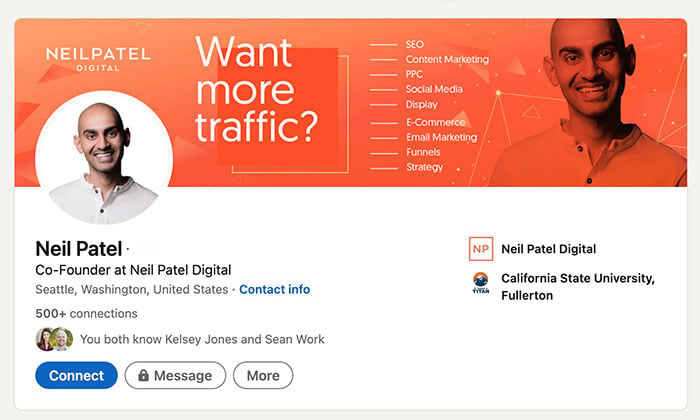
In addition to searching for a competitor’s headshot—or if your competitor doesn’t have a “face” attached to it—search for the brand’s logo.
Step 2: Use Reverse Image Search
You can’t upload a photo on the standard Google homepage.
Click on “Images” in the top right-hand corner to load the reverse image search feature or go to images.google.com.

Next, click on the camera icon.
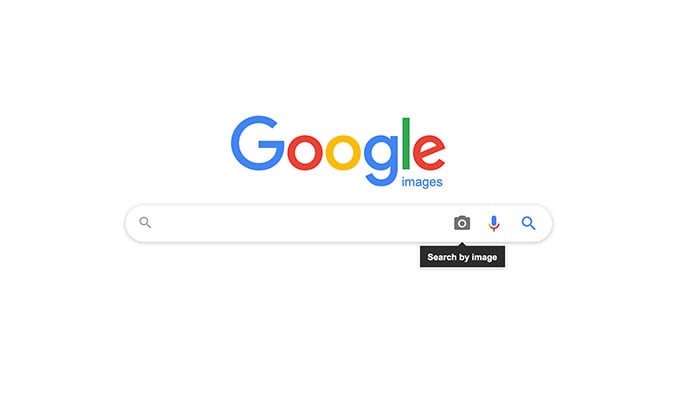
Choose the headshot or logo you downloaded in step 1 and click on the blue “Upload an Image” tab. Google will then return a results page that looks like this:
Step 3: Start Looking for Opportunities
If we use the example of my headshot, you’ll see the first result points back to this blog.
Scroll down further, and you’ll see my author profile for CoSchedule. The blog has a DA of 57 and is a popular tool for content marketers. As a competitor, this is the kind of site you want backlinks from or to write guest posts for.
Having a guest post on a high authority site like CoSchedule could add to your credibility. You can use it to establish yourself as the go-to expert in your niche and get your message in front of your target audience.
Don’t forget to reverse image search your competitor’s logo! It can help you find opportunities to get listed on resource pages or niche directories.
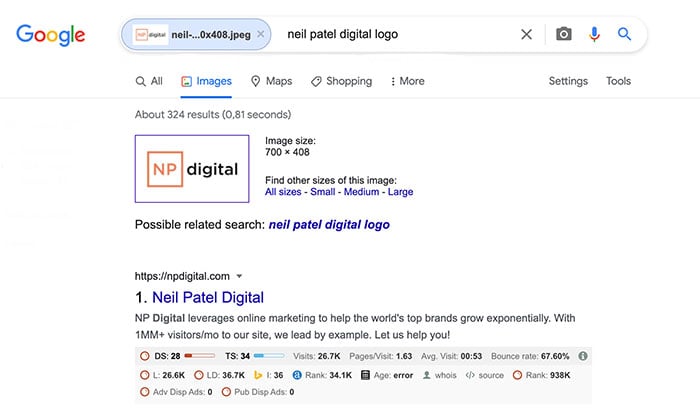
How to Find Guest Post Ideas Once You’ve Completed the Reverse Image Search and Competitor Research
Now that you’ve completed your reverse image search, you should have a master list of websites your competitor uses for backlinks. Now what?
It’s time to come up with guest post ideas, start pitching, and, when a site agrees to your guest post, deliver compelling content to drive traffic back to your business.
You’ll have a much stronger pitch if you have a few blog post ideas. Here’s how to make sure you come with content the website will love.
Read Their Blog
You don’t want to make the mistake of pitching a blog post that’s already on your target’s website or won’t add value to their audience.
Editors receive an average of 10 pitches per day, and 20 percent of them don’t thoroughly read 90 percent of those pitches because they can tell at a glance they’re not worth the time. Make sure yours is in the 10 percent that the editors read.
How? By thoroughly reviewing the website you’re targeting. After reading the site’s content, you should be able to answer the following questions:
- Who is the audience? B2B, CEOs, moms working from home, etc.
- What is the level of the audience? beginner, intermediate, advanced, etc.
- What type of content do they post? 3,000+ word tutorials, quick tips and tricks, narrative essays, etc.
- What are the content gaps? Are they missing a comparison between two popular tools? Can you offer a different perspective on a hot topic?
- What topics do best? Use Buzzsumo to see what posts get the most shares on social media.
Keyword Research
Once you have a few topic ideas in mind, tie everything together with keyword research.
Presenting a unique guest post idea backed with a strong long-tail keyword shows you know how visitors reach the site and, therefore, can write for their audience.
Plus, you want people to read your post. Choosing a keyword with a decent amount of traffic ensures you’re writing a blog your target audience will find and consume.
Use Ubersuggest to find high traffic, low competition keywords. Remember to check your chosen site’s DA so you can target the right keywords.
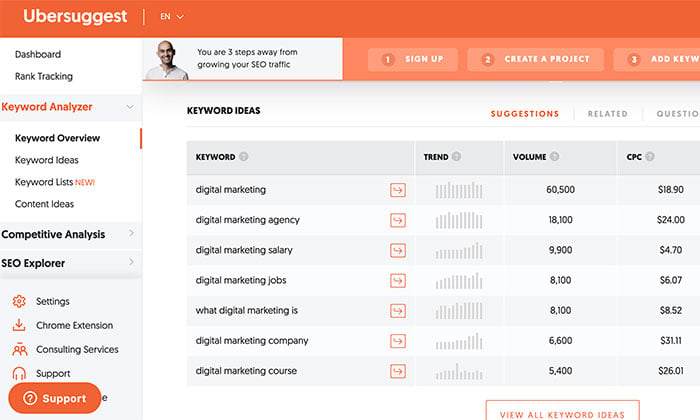
How to Pitch Your Guest Post After Doing a Reverse Image Search on Your Competitors to Find Potential Backlink Opportunities
I have an in-depth guide on becoming a successful guest blogger, but here are the pitching basics to follow every time:
- Read the Guidelines
Always check to see if the site has guest posting guidelines. If they do, follow them to make sure your post doesn’t get rejected. According to research by PointVisable, 22 percent of guest posts are rejected for not following the guidelines.
- Personalize the Email
Hop onto LinkedIn or read the “About” page and find the exact person you need to email. If you can address the blog owner by name, you’ll have a higher chance of success than starting an email with “Dear Sir.”
- Introduce Yourself
Include your industry expertise, accolades, and link to other places you’ve been published. You want the person to understand you’re not a generalist. You’re an expert with something valuable to add.
Reverse Image Search FAQ
Go to images.google.com and click on the camera icon. Upload the image and click on search.
Download or take a screenshot of your chosen image, then open the Google (not the Chrome) app on your phone. Tap the rainbow camera icon, allow any permissions it asks for, then tap the gallery icon. Select an image from your phone, and Google will display the results. You can also use Google Lens to take a photo and search for it.
If you’re using the Chrome browser (again, not the app), you can reverse image search by right-clicking on any picture and selecting “Search Google for an image.”
Yes. It’s a free tool you can access via Chrome.
Reverse Image Search Summary
As you can see, reverse image search is a powerful backlink tool. It can help you identify the best sites to target for backlinks and go after the sites giving your competitors results in their business.
However, searching for an image is only the start. Once you have a list of sites, do your due diligence and pitch blog post ideas to establish your business as the go-to expert.
Only compelling blog posts will get you the backlinks you need to rank higher on search, attract the right people onto your website, and into your sales funnel.
Do you think reverse image search is a good way to gain an advantage over your competitors?
from Blog – Neil Patel https://ift.tt/3v8mVeX
via IFTTT
No comments:
Post a Comment